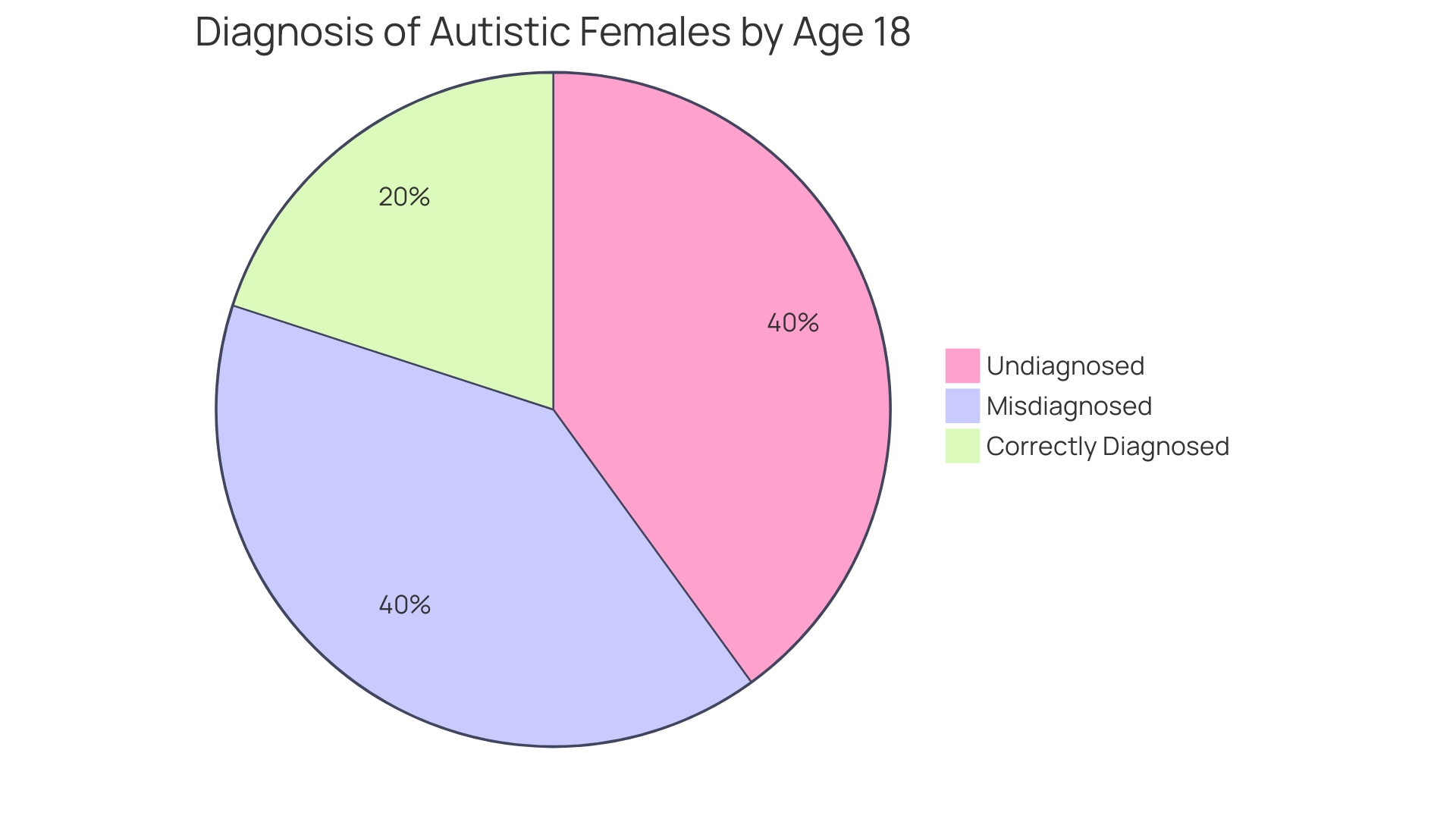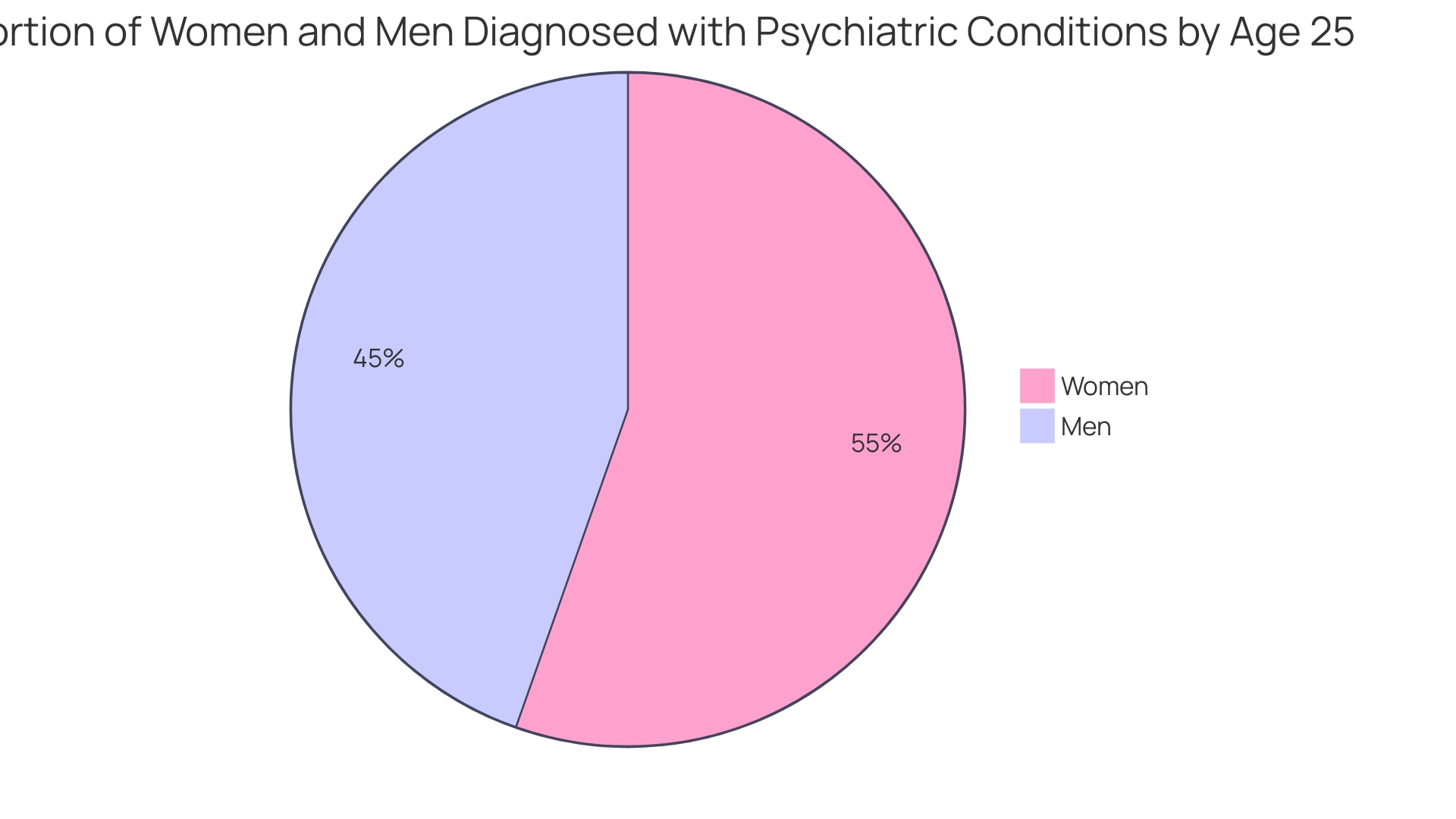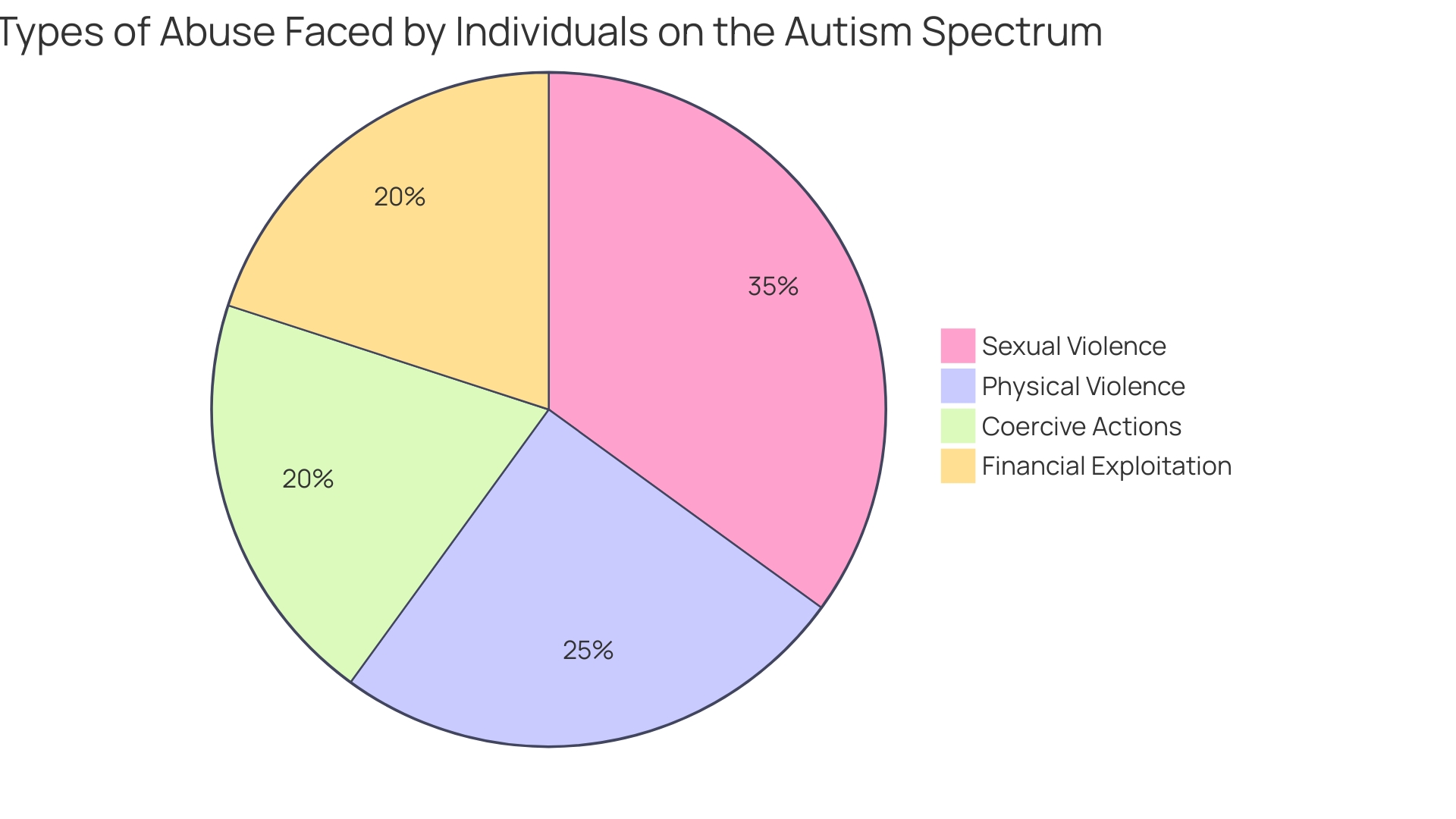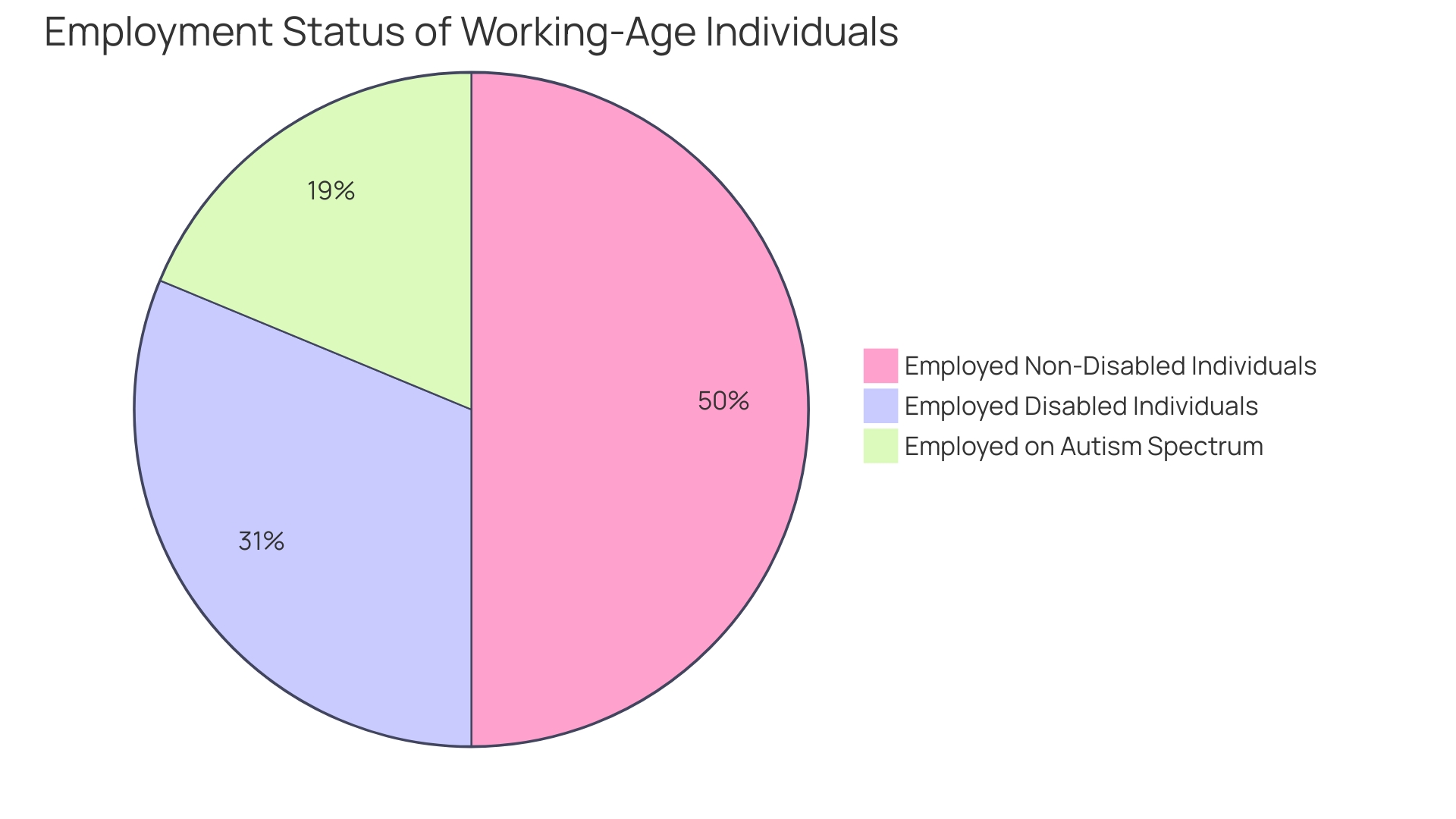Introduction
The complexities surrounding autism diagnosis and support for women are often overshadowed by traditional narratives that focus predominantly on male presentations. As the understanding of autism evolves, it becomes increasingly clear that the experiences of women and non-binary individuals on the spectrum are distinct and require tailored approaches. Many women exhibit subtler signs of autism, complicating the diagnostic process and leading to alarming rates of misdiagnosis.
Furthermore, societal pressures can drive these individuals to mask their true selves, resulting in significant emotional strain and an increased vulnerability to mental health issues. This article delves into the multifaceted challenges faced by autistic women, from the nuances of diagnosis to the cultural pressures that influence their lives, while emphasizing the urgent need for awareness, support, and advocacy. By illuminating these critical issues, the conversation shifts towards fostering an inclusive environment that recognizes and empowers autistic women, ensuring they receive the understanding and resources they deserve.
Challenges in Diagnosis and Recognition
Diagnosing autism in adult females is a complex process that often reveals the unique ways in which symptoms manifest differently from those seen in men. Many individuals display subtler signs of autism, which can lead to misdiagnosis or, in some cases, a complete lack of diagnosis. Conventional diagnostic standards have mostly been created based on male presentations, potentially obscuring the unique experiences of females on the spectrum.
For example, many women develop coping strategies that effectively mask their symptoms, making it challenging for clinicians to identify their struggles. Research indicates that around 80% of autistic females remain undiagnosed or misdiagnosed by the age of 18. This lack of recognition can lead to years of confusion and unanswered questions regarding their psychological well-being. Women and non-binary individuals on the spectrum experience mental health issues at higher rates than their male counterparts. In fact, by age 25, approximately 77% of autistic individuals have been diagnosed with a psychiatric condition, highlighting the urgent need for better diagnostic practices.
Furthermore, societal pressures often push individuals to conform to neurotypical behaviors, leading to a phenomenon known as 'masking.' This not only complicates the diagnostic process but also contributes to significant emotional strain. The intersection of gender and autism can create barriers that influence how symptoms are viewed by both the person and healthcare providers. As a result, clinicians must be well-informed about these nuances to facilitate accurate diagnoses. A growing body of research emphasizes the importance of recognizing these gender differences in autism presentations to improve the diagnostic process and, ultimately, the well-being of individuals on the spectrum.

Social and Cultural Pressures: Camouflaging and Masking
Women on the autism spectrum often engage in camouflaging behaviors to navigate a world that frequently feels at odds with their natural selves. This process, sometimes referred to as compensation, involves mimicking social interactions and suppressing innate tendencies to blend in with societal expectations. Such strategies can be especially pronounced in cultures that place a high value on conformity, as seen in non-Western societies like Japan. Here, the pressure to conform can worsen mental health issues for individuals on the spectrum, leading to increased levels of anxiety and a diminished sense of self.
Studies show that these camouflaging behaviors play a major role in the underdiagnosis and misdiagnosis of females on the spectrum. Alarmingly, studies indicate that approximately 80% of females on the autism spectrum remain undiagnosed or misdiagnosed by the age of 18. The emotional burden of consistently concealing their genuine identities can be significant, with many individuals on the spectrum expressing sensations of fatigue and unease. According to recent findings, 77% of women with autism and about 62% of men with autism are diagnosed with a psychiatric condition by age 25. This stark reality highlights the psychological health crisis that individuals on the spectrum encounter, which has frequently been neglected.
Prof. Oshima's research highlights the pressing necessity for awareness and assistance designed specifically for those on the autism spectrum in Japan, stressing how societal expectations and stigma can affect psychological well-being. The link between social camouflage and mental health outcomes illustrates the necessity of understanding these behaviors in the broader context of cultural beliefs and support systems. As awareness of neurodiversity continues to grow, it is crucial to shift the focus from perceived deficits to recognizing the adaptability and resilience of autistic individuals, allowing for a more inclusive environment that accommodates their unique needs.

Vulnerability to Abuse and Exploitation
Individuals on the autism spectrum encounter a considerable threat of mistreatment and exploitation, frequently intensified by their distinct social interaction difficulties. These difficulties can hinder their ability to identify manipulative behaviors or seek assistance when they are in harmful situations. This vulnerability is further intensified by societal stereotypes that depict females as more compliant or submissive, which can lead to a higher likelihood of unhealthy relationships.
The statistics are alarming; around one in five individuals globally live with a disability, and they are estimated to be up to ten times more likely to experience gender-based violence compared to their non-disabled counterparts. A stark reality emerges: between 40 to 68 percent of girls with disabilities face sexual violence before turning eighteen, with those having mental disabilities being particularly at risk. This troubling trend is not merely a statistic but a reflection of the lived experiences of many individuals.
Dr. Lynnmarie Sardinha from the WHO has emphasized the critical need to understand how diverse individuals are differently affected by violence, particularly those with disabilities. She notes, "Understanding how diverse individuals of different genders are differently affected, and if and how they are accessing services, is critical to ending violence in all its forms."
Furthermore, the systematic problems associated with support frameworks can result in individuals on the spectrum feeling isolated and lacking the essential resources to manage their situations. For instance, a harrowing case from Kyrgyzstan illustrates the dire consequences of this isolation. A young individual named Aselya endured years of abuse without access to education or social services, highlighting how societal neglect can perpetuate cycles of violence. The lack of protective measures often results in perpetrators evading justice, leaving victims trapped in their situations.
Alongside physical and sexual violence, females on the spectrum may also face coercive actions from caregivers or healthcare providers, including financial exploitation or the denial of crucial services. 'This multifaceted abuse highlights the urgent requirement for customized support frameworks that acknowledge the distinct vulnerabilities encountered by individuals on the spectrum, ensuring they have access to the resources and advocacy necessary for their protection and empowerment.'.

Strategies for Support and Inclusion
Promoting understanding and acceptance of individuals on the autism spectrum is essential for their empowerment. Creating customized educational programs is an important measure in meeting the distinct learning requirements of these individuals. Such programs should not only focus on academic skills but also on social skills training that acknowledges and respects each person's experiences.
Community support groups can provide vital spaces for women on the spectrum to share their stories, connect with others, and foster a sense of belonging. These groups can be instrumental in diminishing feelings of isolation, which many people on the spectrum experience. The significance of community support is highlighted by the fact that active involvement in community life is a crucial factor for mental health and well-being for everyone, including those with disabilities.
Increasing understanding among professionals and the broader community regarding the unique difficulties encountered by females on the spectrum is essential. A recent study highlights that despite a strong desire to work, only about 30% of working-age individuals on the autism spectrum are employed, compared to 50% of all disabled people and 80% of non-disabled individuals. This disparity illustrates the need for advocacy and systemic changes to ensure that individuals on the spectrum receive the support they need to thrive in various aspects of life, including employment.
Furthermore, the language used to describe autism is evolving, with many advocating for identity-first language, which acknowledges autism as a core aspect of one’s identity. This shift is essential in fostering acceptance and understanding, helping to combat stigma and misunderstanding in society.
In summary, fostering environments that promote understanding, creating tailored educational and social support systems, and raising awareness about the unique challenges faced by autistic women are all vital steps toward building a more inclusive society.

Conclusion
The challenges faced by autistic women and non-binary individuals are multifaceted and deeply rooted in societal norms and expectations. Misdiagnosis and the lack of recognition for their unique presentations of autism contribute to a cycle of confusion and mental health struggles. With research indicating that a significant percentage of autistic women remain undiagnosed or misdiagnosed, it is imperative that clinicians and support systems evolve to better understand and address these differences.
Social pressures to conform often lead to the masking of true identities, resulting in emotional strain and increased mental health issues. The impact of cultural expectations can further complicate these experiences, particularly in societies that prioritize conformity over individuality. Awareness and advocacy are essential to dismantling these barriers, allowing for a more nuanced understanding of autism that embraces the diverse ways it manifests in women and non-binary individuals.
Moreover, the heightened vulnerability of autistic women to abuse and exploitation highlights a critical gap in protective measures and support systems. The alarming statistics surrounding gender-based violence against women with disabilities call for urgent action. It is essential to create tailored resources that empower these individuals and equip them with the tools to navigate potentially harmful situations.
Ultimately, fostering an inclusive environment requires a collective effort to promote understanding, develop tailored educational programs, and raise public awareness about the unique challenges faced by autistic women. By prioritizing advocacy and support, society can work towards a future where autistic individuals are recognized, valued, and empowered to thrive in all aspects of life.




